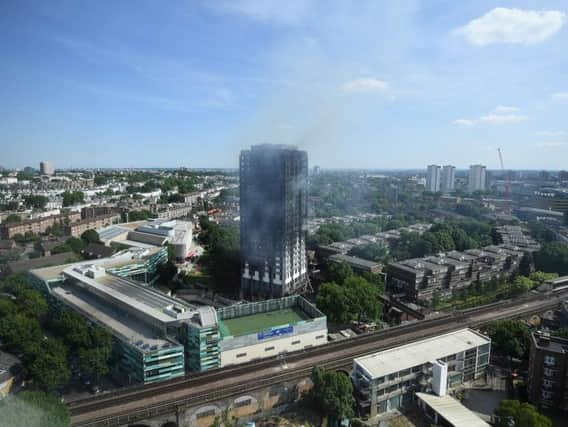Cladding paper chase could cost vendors dear - David Alexander


At the time, it must have seemed inconceivable to viewers that the after-effects of the tragedy would cause a problem for buyers and sellers of flatted properties living in London and beyond, even if the buildings housing them adhered to the type of regulations meant to prevent another Grenfell-type fire.
This, however, is exactly the consequence of a recent decision by mortgage lenders to introduce new guidance that properties over 18 metres high with any cladding must now be provided with written confirmation that they meet fire safety standards set out by the Ministry for Housing.
Advertisement
Hide AdAdvertisement
Hide AdHere in Scotland, where buildings regulation is devolved, the minimum building height at which non-combustible wall cladding is to be provided was lowered from 18 to 11 metres from 1 October. As a result, chartered surveyors acting on behalf of mortgage lenders have had no alternative but to impose “nil valuations” in Home Reports on flats – including those at the expensive, luxury end of the market whose valuations in normal times, certainly in Edinburgh and Glasgow, can be in excess of £1 million.


Properties built since the Building (Scotland) Act became law in 2005 have had to comply with high safety standards, including those relating to fire. However, both north and south of the Border, issuing of written evidence confirming these standards have been met has been a grey area with Home Reports, until recently, signed off without reference to the relevant documents.
Patience
Lenders, surveyors, solicitors and the authorities are said to be working towards a solution, so in the meantime it looks as if both buyers and sellers caught up in the situation will have to bide their time until one is found. For vendors, there is the additional concern that while this state of limbo exists, those who have made an offer to buy will change their minds and pull out.
Sadly, there is little I can offer by way of consolation that would help alleviate the position in which frustrated vendors find themselves. However, I would advise them to deal with this through their factor or property management company rather than individually, as the problem is basically the same for everyone – and that includes anyone living on the ground floor or below the 11-metre cut-off.
Even owners who have no immediate plans to sell should act to ensure they get the appropriate documentation sooner rather than later – until this matter is resolved, their properties, presumably, will have a “potential non-valuation”.
Meanwhile, affected vendors who are already legally committed to moving into an alternative home by implication face the prospect of servicing two mortgages until the issue is resolved and their own sale goes through.
An option could be to let out the property they intend moving out of but they could struggle to attract tenants if this is for a relatively short period and their lender might not be keen on such an arrangement. If the present impasse drags on and a buyer withdraws from a sale as a result, a longer-term let (which might find more favour with lenders) may be the only way to reduce mortgage outlays.
I completely understand why lenders should require this documentation – but what remains a mystery is why it is only now appearing on the radar.
David Alexander is MD of DJ Alexander.